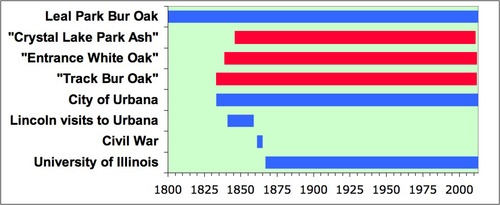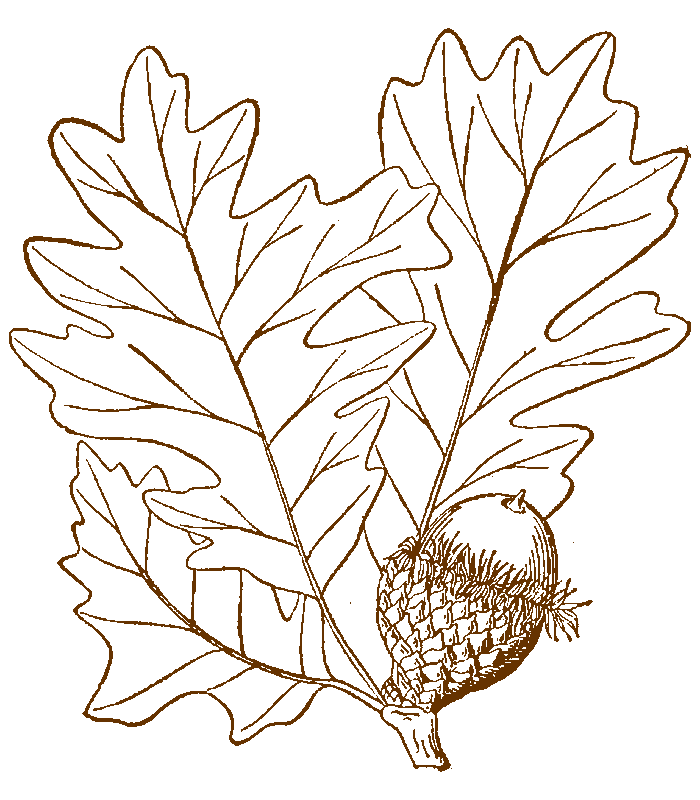Can tree age be used to tell us whether a tree is a Big Grove survivor?
Most trees grow distinct annual "rings" of new wood every year. The number and width of these rings is the raw material of dendrochronology. To know the age of a tree, you just count the rings, in a cut stump or in a thin core drilled from the tree. Rarely there are missing or doubled annual rings, but there are simple ways to identify these.
Over the last year I have been able to study stumps of three trees (yellow dots on the above map) in the Crystal Lake Park area of Urbana - an area clearly within the boundaries of the Big Grove. I have named these three trees the "Crystal Lake Park Ash", "Entrance White Oak", and "Track Bur Oak".
The ring-counts indicate an age of 165 years for the Crystal Lake Ash, 179 years for the Track Bur Oak, and approximately 173 years for the Entrance White Oak (see Background). These are certainly old trees by anyone's reckoning, but none is old enough to be a presettlement Big Grove survivor. To put this into context I have graphed the lifespan of these trees below, along with some other key landmarks in local time. (The Leal Park bur oak is not the largest or oldest surviving original Big Grove "giant" tree, but it is used as an example of a presettlement tree because it is on public land with easy parking access).

To summarize, tree-ring counts can be used to tell tree age with great accuracy. However, you must be precise about the term "Big Grove survivor". For the three trees I have been able to study thus far, the rings tell us is that the trees do not date from pre-settlement times, but germinated at about the time that the area was first being settled and the original giant trees were cut down. But in a genetic sense they are Big Grove survivors - they are direct, first-generation descendants of original Big Grove trees.
